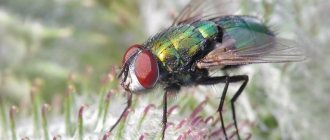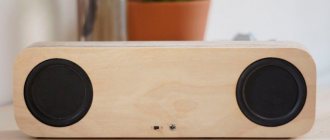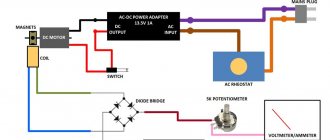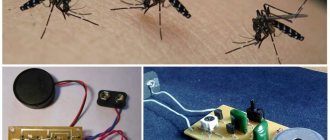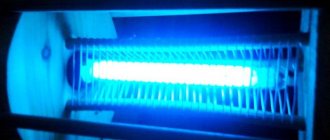The problem called “mosquitoes are gone” is known to each of us. Its solution is relevant not only for summer residents and residents of the private sector located near a lake or other body of water. Bloodsuckers attack apartment owners in city high-rises. Moreover, the number of floors is not a hindrance for them. Disillusioned with the advertised exterminators, craftsmen are trying to find their own method of fighting. A DIY mosquito trap is an alternative to tablets, ointments, aerosols, electronic traps and other industrial devices.
Method 1. Bottle trap
A mosquito bait made from a plastic bottle will not cost you anything. Everything you need to prepare it is available in literally every home. The process itself takes about 10 minutes. But the effectiveness of such a trap has been experimentally proven more than once!
You will need:
- Plastic bottle 1.5 l – 1 pc.;
- Sugar – 50 grams;
- Yeast – 5 grams;
- Cardboard or dark fabric;
- Scotch tape or stapler;
- Water – 200 ml;
- Scissors or stationery knife.
The process of making a mosquito trap is very simple, the main thing is to have the necessary parts and a little skill
Manufacturing process:
- Carefully cut off the neck of the bottle.
- Pour sugar into the lower container and add dry baker's yeast.
- Add water and mix well - the mass should foam. The temperature of the liquid should not exceed 40 degrees, otherwise the yeast will die without even starting to ferment.
- Now insert the neck - you get a funnel.
- Wrap the finished trap in a dark cloth and secure it with tape or a stapler. In the dark, the fermentation process will be much more active.
- Place the trap on a windowsill or on a nightstand near your bed. If possible, hang it indoors using twine. Attracted by a specific aroma, insects will fly into the funnel and immediately drown in it.
This bait works for about a week, then it needs to be changed. To extend the validity period, the dose of yeast and sugar can be increased.
Advice! You cannot keep such a mosquito trap with your own hands in the open rays of the sun, otherwise it will deteriorate and will not have the desired effect. After about two weeks, you can remove the paper and evaluate the result.
For more details, watch the video:
Can be made from improvised materials
Homemade sticky traps
The operating principle of homemade and industrial catchers is based on the physiology of mosquitoes: they are attracted to heat, the smell of urea secreted by human sweat glands, CO2 (exhaled gas) and water. A home mosquito trap does not require the purchase of expensive chemicals or motion sensors. In your household you will always find a piece of cardboard or other thick paper, castor oil (castor oil), turpentine, rosin, water and sugar. This kit can be used to make adhesive sheets or tape. The work is as follows:
- An adhesive bait solution is prepared. To do this, dissolve 3 tablespoons in 5 tablespoons of water. Sahara. The sweet liquid is heated until it boils. Stir until thickened.
- Hot sugar syrup is mixed with half a glass of rosin, a quarter glass of turpentine and 100 g of castor oil until a homogeneous sticky mass is formed.
- The prepared composition is applied to cut paper strips or a whole format sheet.
- The finished trap is placed near a resting place on the street or at the entrance to a room. You can bring it into the house and watch how mosquitoes flock to the smell and stick to the paper.
- As the catcher becomes full of insects, it should be changed. Usually this is done once a week.
Attention! Another composition is used as an impregnation for paper tapes: pine resin (0.3 kg), linseed oil (0.15 kg), beeswax (0.01 kg), honey (0.05 kg).
Method 2. Trap with vegetable oil
Perhaps this is the simplest homemade trap - an option for those who have absolutely no time, but really want to get rid of mosquitoes.
You will need:
- Plastic bottles - 3-4 pieces;
- Vegetable oil – 4 tbsp. spoons;
- Scissors.
Manufacturing process:
- Cut off the tops of the bottles just below the neck.
- Lubricate large parts inside generously with sunflower oil.
- Place baits in places where mosquitoes accumulate or make holes in the sides, thread ropes through them and hang them indoors.
How to reduce mosquitoes
When it comes to mosquitoes, the best defense is offense, so encourage the creatures that prey on them. Swallows, robins, mockingbirds, geese, ducks and songbirds feed on pests. Dragonflies can also eat hundreds of mosquitoes a day, and you can attract them with plants like irises and buttercups. But the number one enemy of mosquitoes is bats! They come out at dusk to eat their favorite meal, and while you may not want bats snuggling up against the shutters of your home, you can build a DIY bat house. Many species of fish and turtles also eat mosquitoes, but having them in your yard means installing a water source.
Method 3. Electronic trap
Making electronic baits is a rather complex process that requires certain skill and at least minimal knowledge of physics. This detailed step-by-step instruction will help you complete this task without any problems.
You will need:
- Paper packaging for juice or dairy products;
- Wire (thick);
- A piece of gauze;
- Knife;
- Glue;
- A small fan that runs on batteries (portable or from a car will do);
- A small light bulb or mini flashlight.
Manufacturing process:
- Make a body for the future bait. To do this, cut off the top and bottom of the juice bag.
- Using thick wire, secure a small fan inside. The blades should be positioned so that the air stream flows downwards.
- Cut a round piece of gauze (diameter – 50-70 cm).
- Glue it to the bottom edge of the box. It should look like a bag.
- Move to the top and make two holes on the sides.
- Insert wire into them to create a bow like a bucket.
- Attach a light bulb to this handle. The same wire is suitable for fixing.
- All that remains is to make a loop and secure it to the handle. This part will allow you to hang the trap in any suitable place.
- Turn on a light bulb and fan and place the bait near a door or window.
This device works very simply - attracted by the light of the light bulb, mosquitoes fly closer and immediately fall under the influence of the fan. It sucks the insects into a gauze bag, in which they die.
Very interesting trap designs
A simple mosquito trap can be made from a piece of gauze coated with insect glue. The treated fabric is stretched over ventilation holes and shafts. It can also be used for window openings.
A UV-based insect trap can be made from a 20-watt fluorescent lamp enclosed in a mesh frame. Mesh weaving consists of two metal wires under tension. For safe servicing, the model is placed in a woven mesh case. The trap works as follows: mosquitoes, attracted by ultraviolet radiation, fly towards it and are exposed to voltage applied to an electrical grid. On the one hand, the device fights insects, and on the other, it is a source of soft, calm lighting.
Method 4. Glue trap
Duct tape is an excellent insect killer available for homemade use. A safe trap impregnated with a certain composition will quickly attract mosquitoes.
You will need:
- Cardboard sleeve - a roll of toilet paper or paper napkins will do;
- Thick paper - thin paper will soften quickly;
- Threads;
- Adhesive mixture.
Hang sticky mosquito traps around the house - most pests will take the bait
Manufacturing process:
1. Take the largest sheet of paper possible (you can use wallpaper) and cut a not too wide ribbon from it.
2. Wrap it around a cardboard sleeve.
3. Prepare the adhesive mixture. The following ingredients are suitable for this:
- Rosin (200 grams), castor oil (100 ml), sweet syrup (50 ml), turpentine (50 grams);
- Pine resin (300 grams), wax (10 grams), honey (50 grams), flax oil (150 ml);
- Glycerin (40 ml), rosin (400 grams), honey (100 grams), Vaseline (200 grams).
4. Mix any of these compositions well and heat over steam.
5. Unscrew a small piece of paper from the sleeve and coat it with the sticky mixture.
6. Hang the trap in the place where mosquitoes appear most often. Once the sticky area is filled with insects, tear it off and apply a new one.
This bait will help cope not only with mosquitoes, but also with flies.
Important! If you decide to make such a trap yourself, be very careful and try not to get dirty. The sticky mixture is difficult to wash off hands and leaves stains on clothes. Another disadvantage of Velcro is its fragility - unfortunately, natural ingredients do not last as long as chemical ones.
There is another option for making sticky traps. To do this, a sheet of paper cut into strips must be lubricated with any of these products:
- rosin;
- jam;
- sugar;
- turpentine
- castor oil.
You can also prepare a mixture of alcohol, milk, sugar, water, potassium dichromate and black pepper. It acts on mosquitoes no worse than an insecticide.
Several of these traps are hung with clothespins from a clothesline.
Electrical devices
People with basic knowledge of a home electrician can make a more complex mosquito trap with their own hands. The classic version is a device based on an ultraviolet lamp and a current source. They work on the principle of most professional electrical traps, but the cost, of course, is incomparable.
In general terms the scheme will be like this. You need to take a small ultraviolet lamp. Place it in a special mesh wire frame. Light will act as a factor that will attract the attention of bloodsuckers.
The frame can be soldered independently from thin rods. It should be tight to let in as few insects as possible. An electric current is supplied to the mesh, which will produce a fatal shock when a mosquito touches the open frame.
The device is suitable for use at home, but there are several nuances. To make it you will need at least basic knowledge in electrical and engineering. In addition, an open current source, an energized grid, poses a real danger to the health and even life of the user. To reduce the level of danger, you can cover the bait with an outer, dense layer of synthetic mesh, which will prevent accidental contact with the unit, but will not prevent insects from entering inside.
Also, the cost of an ultraviolet lamp can be a deterrent to making an electric mosquito trap yourself.
